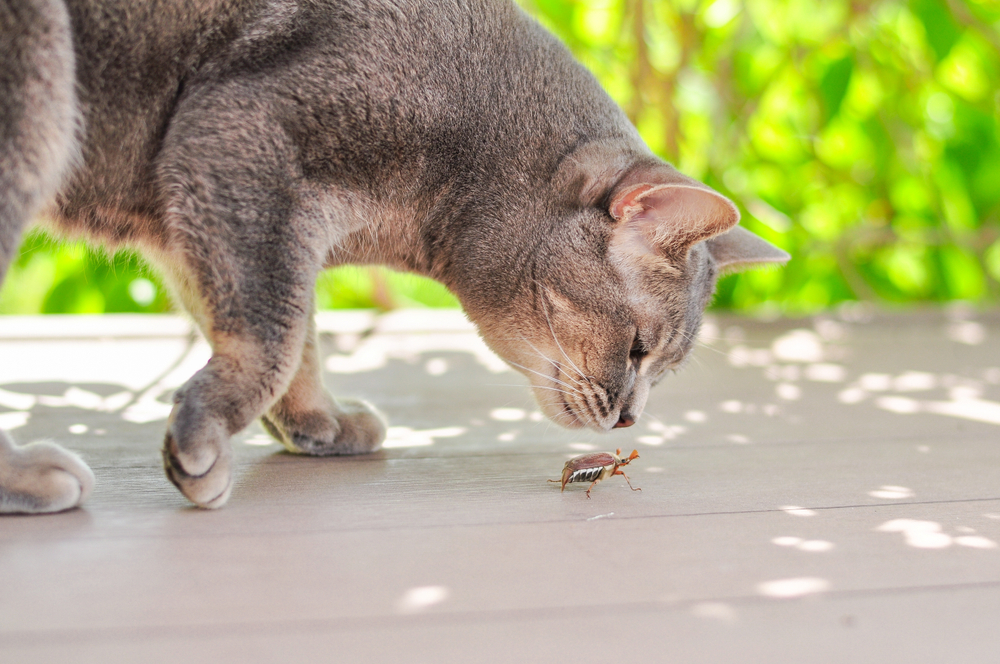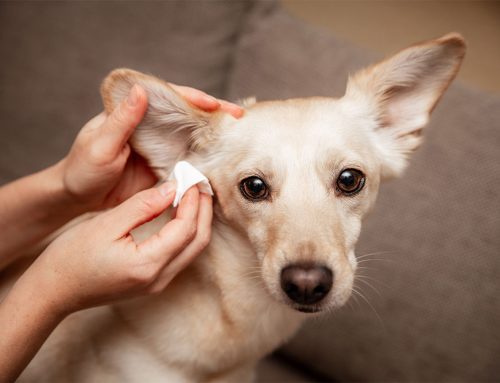Bug bites and stings are a real pain for pets, and more than that, they can lead to serious problems. During Texas’s hot summer weather, the insect population soars. Our Oliver Animal Hospital team shares tips to help you prevent, identify, and treat your pet’s bug bites and stings.
How to prevent bites and stings in pets
While you can’t eliminate your pet’s bug bite and sting risk, you can take precautions to make your pet and your environment less appealing to insects on the hunt. To decrease your pet’s bug bite and sting risk, follow these tips:
- Become familiar with common culprits — Many bug bites can cause your pet irritation. However, the following bites and stings are more likely to cause your four-legged friend serious health issues:
- Fleas — Pets who are allergic to a flea saliva protein (i.e., flea allergy dermatitis [FAD]) can become intensely itchy, lose hair, and develop scabs and skin infections.
- Ticks — Ticks are vectors (i.e., carriers) for many harmful bacteria, including those that cause Lyme disease, anaplasmosis, ehrlichiosis, Rocky Mountain spotted fever, and many more.
- Flies — Certain fly species can cause your pet serious health problems. For example, botfly eggs can hatch into Cuterebra larvae (i.e., warbles) that can lead to a skin abscess.
- Mosquitoes — Mosquitoes are more than a nuisance to pets. Pets’ most serious mosquito-borne illness is heartworm disease, which can be fatal.
- Bees, wasps, and hornets — Stings are painful, and some pets experience an allergic reaction, which may include hives, vomiting, diarrhea, or collapse. If your pet is stung on the nose or face, their breathing can become restricted, and they can experience a respiratory emergency.
- Spiders — While many spider species exist, widow and recluse spiders are the most dangerous to your pet. When widow and recluse spiders bite, they release potent venom. So, keep an eye out for these spiders. Widow spiders have an hourglass marking on their abdomen. Recluse spiders have a violin-shaped marking on their back.
- Administer year-round parasite preventives — Parasites are a constant threat to your pet. However, year-round parasite control protects your pet from fleas, ticks, and heartworms, and the deadly diseases they can carry. Parasite preventives come in several forms, including topical treatments and oral medications. Your Oliver Animal Hospital veterinarian can help you choose a product that suits your pet. In addition to giving your pet preventives, you should ensure they are screened for parasites annually.
- Avoid areas where pests are prevalent — When outdoors with your pet, avoid insect habitats. Dense vegetation and tall grasses are breeding grounds for ticks, while standing water attracts mosquitoes, particularly around dawn and dusk. By avoiding areas where pests are prevalent, you help decrease your pet’s bite and sting risk.
- Make your yard less appealing to pests — Maintaining clean and clutter-free outdoor spaces can help eliminate insects’ potential breeding spots. To help keep your yard as bug-free as possible, follow these tips:
- Trim grass and weeds — Ticks like to hide in tall grasses while waiting to grasp on to their next victim.
- Remove leafy debris and brush — Parasite-carrying mammals, such as rodents and rabbits, make their homes in leafy cover.
- Treat your yard with a pet-safe pesticide — Repellents may reduce fleas, ticks, and mosquitoes in your yard. However, before applying a pesticide, talk to your veterinarian to ensure the product is pet-safe.
- Consult a professional pest service — Heavy or recurring flea infestations require professional intervention. Ensure the service you choose uses pet-safe chemicals. Your pet should not be in your home or yard during the treatment process.
How to identify bites and sting reactions in pets
An insect bite can trigger a reaction that may be mild or serious. Pets’ most common bug bite and sting signs include:
- Bite site swelling and redness
- Hives, bumps, or welts
- Persistent itchiness
- Crying, whining, or vocalizing
- Limping or favoring a paw
Anaphylaxis is a particularly dangerous hypersensitivity reaction that can be fatal. Within the first few minutes after your pet has been bitten or stung, anaphylaxis signs usually manifest. Seek immediate veterinary attention if your pet exhibits any of these signs:
- Facial or neck swelling
- Vomiting or diarrhea
- Weakness or incoordination
- Lethargy
- Collapse
- Seizure
- Labored breathing or wheezing
Bug bite and sting treatments for pets

You can treat most bug bites and stings at home. However, when your pet exhibits serious signs, immediately consult our Oliver Animal Hospital team. If your pet exhibits bug bite or sting signs, follow these treatment tips:
- Remove debris — If you see a stinger in your pet’s skin, use a rigid flat-sided item, such as a credit card, to remove the stinger. To remove a tick, use blunt-edged tweezers, grasp the tick at its head’s base, as close as possible to your pet’s skin, and pull the tick straight out, using smooth, even pressure until you feel its release.
- Apply an ice pack — An ice pack or cold press can reduce swelling and itchiness, and relieve pain.
- Apply a topical treatment — Apply a baking soda and water paste to the bite or sting to reduce inflammation and itchiness.
- Consult your veterinarian about medication — Antihistamines and hydrocortisone products may help reduce swelling and manage your pet’s pain and itchiness. However, you should consult our team regarding correct dosing and administration frequency.
- Monitor your pet — While allergic pets typically react only minutes after having been bitten or stung, a delayed reaction can occur. Watch your pet closely for anaphylactic reaction signs, which require emergency treatment.
This summer, tell biting and stinging bugs to buzz off, and ensure your pet receives monthly parasite preventives to help protect them from infectious disease. At the first sign of your pet’s anaphylactic reaction or for answers to all your bug bite and sting questions, contact our Oliver Animal Hospital team.








Leave A Comment